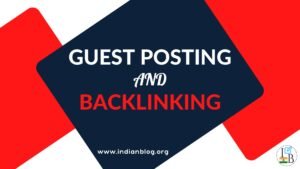In today’s digital age, content is king. With the abundance of information available online, businesses must create compelling and valuable content to stand out, engage their audience, and drive their business growth. Content marketing is the strategy of creating and distributing valuable and relevant content to attract and retain a clearly defined audience and, ultimately, drive profitable customer action. In this blog post, we’ll dive into the world of content marketing, its benefits, and best practices for creating and executing a successful content marketing strategy.
Benefits of Content Marketing
Content marketing has numerous benefits for businesses of all sizes and industries. Here are a few of the top benefits of content marketing:
- Build Brand Awareness: By creating valuable and relevant content, businesses can establish themselves as thought leaders in their industry and build brand awareness among their target audience.
- Engage and Educate Customers: Content marketing allows businesses to engage and educate their customers on their products or services, which can lead to increased customer loyalty and advocacy.
- Drive Traffic and Leads: By creating high-quality content that is optimized for search engines and shared on social media, businesses can drive traffic to their website and generate leads.
- Build Trust and Credibility: By consistently producing high-quality content, businesses can build trust and credibility with their audience, which can lead to increased conversions and sales.
Best Practices for Content Marketing
To maximize the impact of your content marketing efforts, it’s essential to follow best practices for creating and executing your strategy. Here are some tips to help you get started:
- Define Your Audience: Before creating any content, it’s essential to define your target audience and understand their pain points, interests, and preferences.
- Develop a Content Strategy: Develop a content strategy that aligns with your business goals, target audience, and brand voice. Create a content calendar to plan and organize your content creation and distribution.
- Create Compelling and Valuable Content: Create content that provides value to your audience, whether it’s educational, entertaining, or informative. Use a variety of formats, such as blog posts, videos, infographics, and eBooks, to keep your content fresh and engaging.
- Optimize for Search Engines: Ensure your content is optimized for search engines by using relevant keywords, meta descriptions, and alt tags. This will help your content rank higher in search engine results pages (SERPs) and drive organic traffic to your website.
- Promote Your Content: Promote your content on social media, email marketing campaigns, and other channels to drive traffic to your website and increase your content’s reach.
Another important aspect of content marketing is the distribution of the content. Content distribution refers to the channels used to share and promote the content. Effective distribution can help to reach a wider audience and increase engagement with the content. Some common channels for content distribution include social media, email marketing, guest posting, influencer marketing, and search engine optimization.
- Social media is one of the most effective channels for content distribution. Sharing content on social media platforms like Facebook, Twitter, and LinkedIn can help to increase visibility and engagement. It is important to understand the different social media platforms and their audiences to create content that resonates with the target audience.
- Email marketing is another powerful tool for content distribution. By sending out newsletters and promotional emails, businesses can keep their audience informed and engaged. It is important to segment the email list and create personalized content to increase the effectiveness of the email marketing campaign.
- Guest posting on other blogs or websites can also be an effective way to reach a wider audience. By creating valuable and informative content for other websites, businesses can establish themselves as thought leaders and attract new followers.
- Influencer marketing involves collaborating with influencers to promote the content to their followers. This can help to reach a wider audience and increase engagement with the content.
- Search engine optimization (SEO) is the process of optimizing the content for search engines. By using relevant keywords and optimizing the structure of the content, businesses can improve their ranking on search engine results pages (SERPs) and attract more traffic to their website.
Content marketing is a powerful tool for businesses to attract and retain customers. By creating valuable and informative content, businesses can establish themselves as thought leaders and build trust with their audience. Effective content marketing requires a well-defined strategy, quality content creation, and distribution through various channels. With the right approach, businesses can achieve their marketing goals and drive growth.


